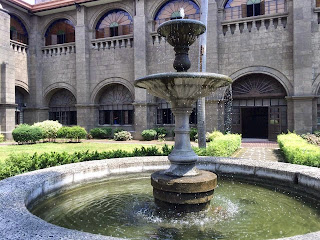Santo Tomas de Villanueva Parish The church was built in 1755 by Fr. Manuel de Santa Barbara. It was made of materials that came from sugar cane and rocks from the sea. The church’s crucero was built in the 1800′s but was partially burned in 1942 during the World War II as well as other important religious items. From the original construction materials of the church, only the solid stones were spared from the fire. It was reconstructed in 1946. In 1981, the building underwent another renovation, this time almost a complete overhaul (only 30% of the original stands). The renovation was completed in 1985.
The Sto. Tomas de Villanueva Parish Church of Danao City would have stood out as a historical relic were it not for a number of renovations introduced by well-meaning parishioners which resulted in material departure from its original architecture when the church was built in 1755.
The Sto. Tomas de Villanueva Parish Church of Danao City would have stood out as a historical relic were it not for a number of renovations introduced by well-meaning parishioners which resulted in material departure from its original architecture when the church was built in 1755.
The Nave of the Sto. Tomas de Villanueva Parish Church















.jpg)





